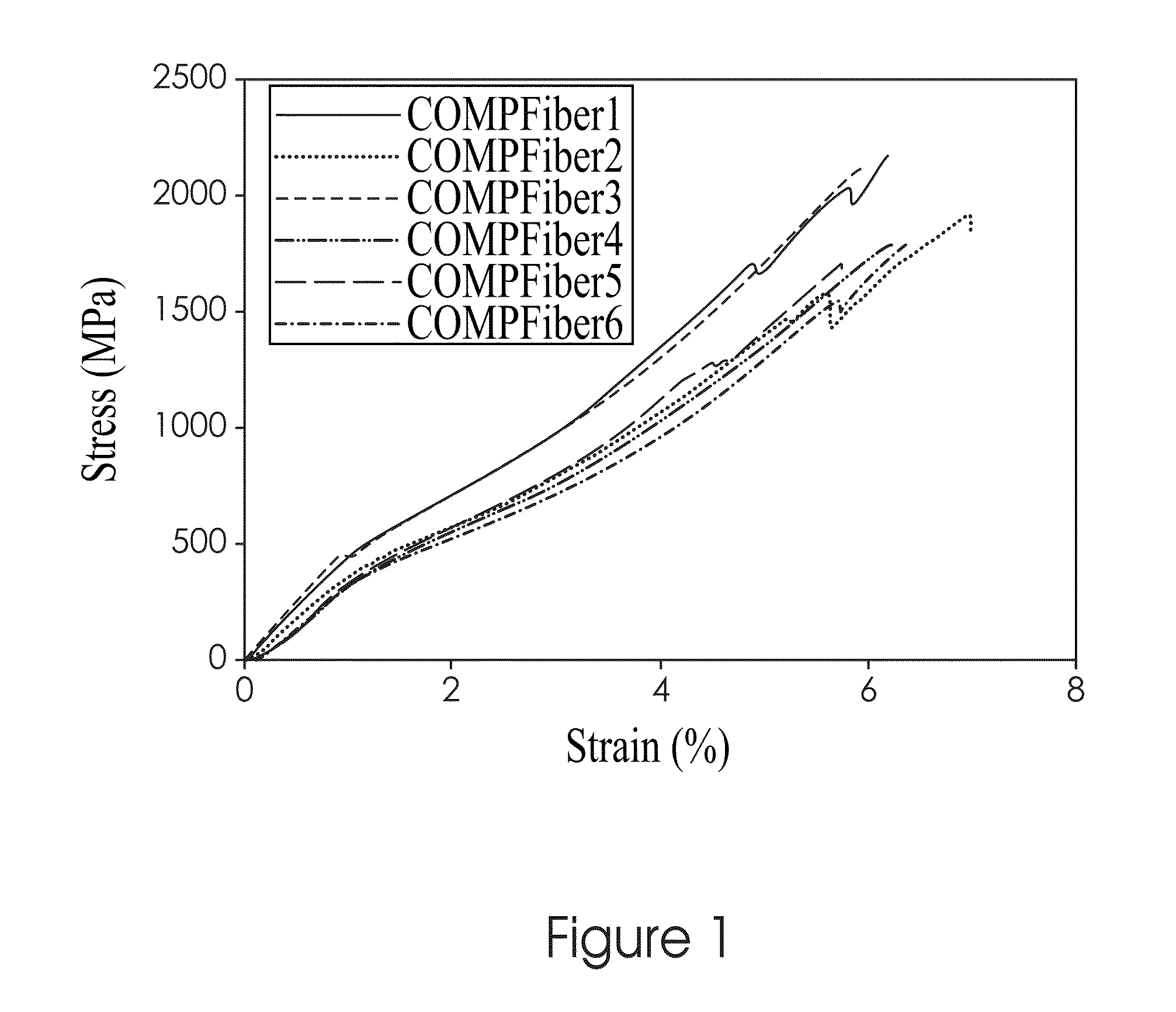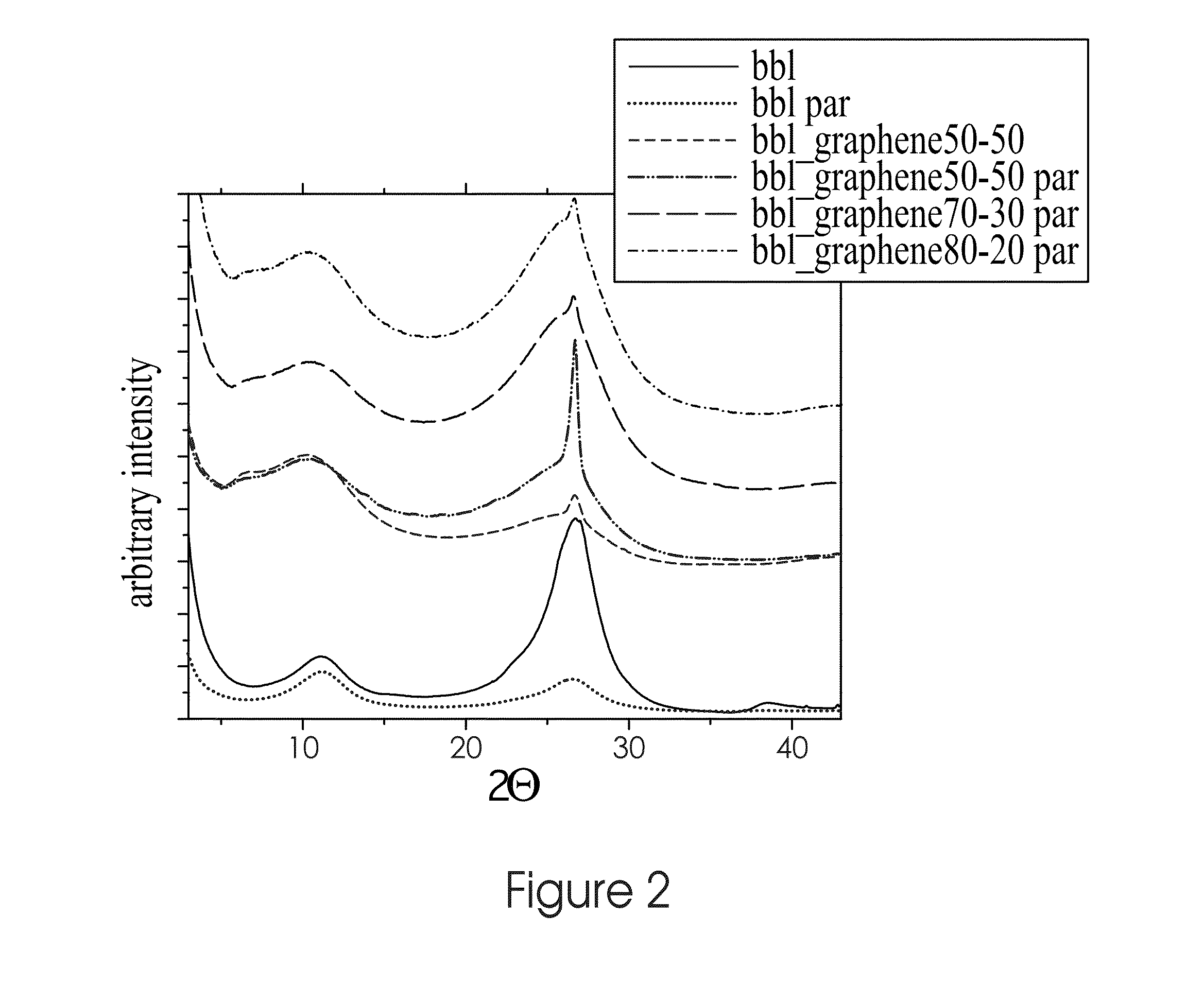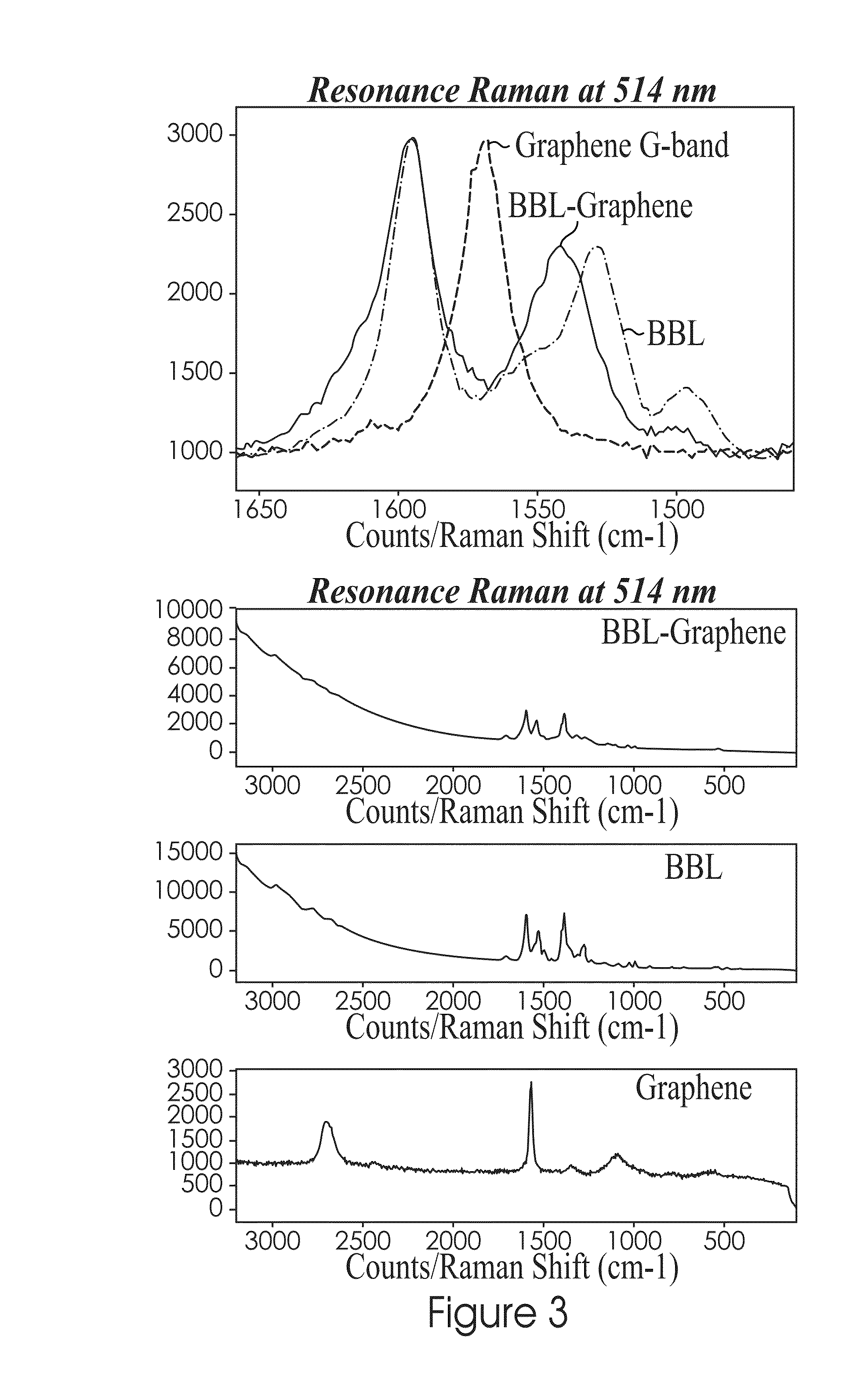Composites comprising rigid-rod polymers and graphene nanoparticles and process for making the same
a technology of graphene nanoparticles and polymers, which is applied in the field of new polymer composites comprising rigidrod polymers and graphene nanoparticles, can solve the problems of difficult damage to the crystal structure of the sheet, and difficulty in achieving good dispersion of graphene in the blend, etc., and achieves high strength.
- Summary
- Abstract
- Description
- Claims
- Application Information
AI Technical Summary
Benefits of technology
Problems solved by technology
Method used
Image
Examples
examples
[0093]The following non-limiting examples are provided to further illustrate the present invention. It should be appreciated by those of skill in the art that the techniques disclosed in the examples that follow represent approaches the inventors have found function well in the practice of the invention, and thus can be considered to constitute examples of modes for its practice. However, those of skill in the art should, in light of the present disclosure, appreciate that many changes can be made in the specific embodiments that are disclosed and still obtain a like or similar result without departing from the spirit and scope of the invention.
example i
BBL / GS (80 / 20)
[0094]A composition of 20 wt % graphene nanoparticles and 80 wt % ladder polymer, benzimidazobenzo-phenanthroline (BBL) was prepared as follows. Into the bottom of a 250-ml resin flask equipped with a mechanical stirrer, a nitrogen inlet and outlet, was placed 5.6804 g (0.02 mol) of 1,2,4,5-tetraaminobenzene tetrahydrochloride, 6.0842 g (0.02 mol) of 1,4,5,8-naphthalenetetracarboxylic acid, and 16.16 g of phosphoric acid (85%). The resulting mixture was dehydrochlorinated under nitrogen atmosphere at 65° C. for 16 hours. The temperature was then raised to 80° C. and held for 4 hours. 1.32 g of graphene nanoparticles (chemical synthesized graphene nanoparticles from Angstrom, Inc., Dayton, Ohio) was added to the mixture. The mixture was heated at 100° C. for 16 hours and then cooled to room temperature. 10.69 g of P2O5 was added to the mixture to generate polyphosphoric acid (77% P2O5). The mixture was stirred for 2 hours at 80° C. and cooled to room temperature. 20.02 ...
example ii
PBZT / GS (90 / 10)
[0095]A composition of 10 wt % graphene nanoparticles (GS) and 90 wt % polyphenylenebenzobisthiazole (PBZT) was prepared as follows. Into the bottom of a 250-ml resin flask equipped with a mechanical stirrer, a nitrogen inlet and outlet, was placed 4.904 g (0.02 mol) of 2,5-diamino-1,4-benzenedithiol dihydrochloride, 3.3226 g (0.02 mol) of 2,5-dihydroxyterephthalic acid, and 20.68 g of phosphoric acid (85%). The resulting mixture was dehydrochlorinated under nitrogen atmosphere at 65° C. for 16 hours. The temperature was then raised to 80° C. and held for 4 hours. 0.52 g of purified graphene nanoparticles (chemical synthesized graphene nanoparticles from Angstrom, Inc., Dayton, Ohio) was added to the mixture. The mixture was heated at 100° C. for 16 hours and then cooled the mixture to room temperature. 13.69 g P2O5 was added to the mixture to generate polyphosphoric acid (77% P2O5). The mixture was stirred for 2 hours at 80° C. and then cooled to room temperature. 12...
PUM
| Property | Measurement | Unit |
|---|---|---|
| Temperature | aaaaa | aaaaa |
| Temperature | aaaaa | aaaaa |
| Fraction | aaaaa | aaaaa |
Abstract
Description
Claims
Application Information
 Login to View More
Login to View More - R&D
- Intellectual Property
- Life Sciences
- Materials
- Tech Scout
- Unparalleled Data Quality
- Higher Quality Content
- 60% Fewer Hallucinations
Browse by: Latest US Patents, China's latest patents, Technical Efficacy Thesaurus, Application Domain, Technology Topic, Popular Technical Reports.
© 2025 PatSnap. All rights reserved.Legal|Privacy policy|Modern Slavery Act Transparency Statement|Sitemap|About US| Contact US: help@patsnap.com



